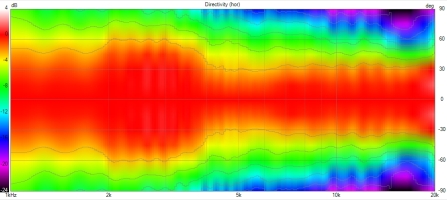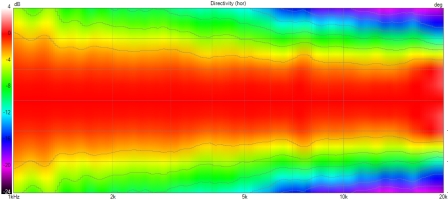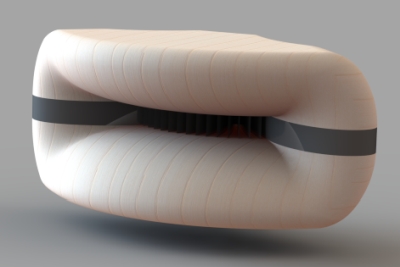Mid-range beaming and narrowing
Definition
The midrange narrowing is the fact that the baffle step will reduce and dig the response in plain midrange of the speaker due to edge diffraction.
The midrange beaming is accidents due to the same reason.
Here we can see a not fully optimised end of profile resulting a narrowed mid-range in 1kHz region :

The speaker doesn’t have a proper complete return on the baffle sides, generating this problem:
A mid-range narrowing, even id its relatively acceptable here, and mid-range beaming as some accident we can see in mid-range region.
That will imbalance the listening experience.
How to deal with midrange narrowing ?
Integration of the horn is as important as the Horn himself, the baffle is in fact a flat 180° horn. So in free air we have to continue the profil smoothly for avoid mouth diffraction and baffle diffraction.
Theses diffraction will cause accidents and a large mid-range narrowing on the global energy radiation behavior that will seriously impact the listening.
Whatever the horn, wageguide, integrated on baffle or not, the contour must be fluid even on reverse side and in all directions.
Here is a very good elliptic waveguide with a slightly rounded traditional baffle where mid-range beaming and mid-range narrowing are still visible :

Then the same wave guide (but 0.5" tinier) integrated with a fluid profile :

It’s why a fluid profile everywhere matter: A round or elliptic horn into a square baffle even with a round-over will brings accidents and problems.
For solve this we pass from round to rectangular smoothly with the garanti to keep the good radiation behavior of the horn, with this way the horn and the baffle become the same element.
Historically bi-radial horns with fins wasn’t very good on this point mainly by the absence of rounded curve and the fins conception, today the new technology and FEA simulation allow us to completely solve theses previous down sides.
